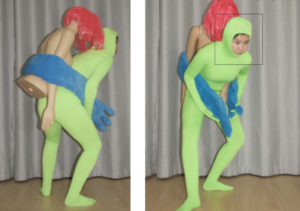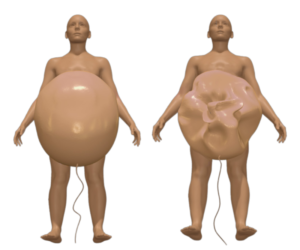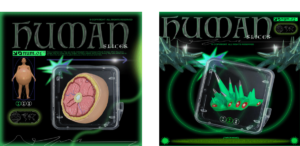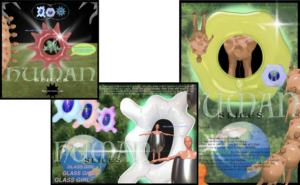
“Botanical Museums: A Peculiar Exhibition of Human Anomalies”
Museums serve as repositories for culturally significant artifacts, and humans have long been fascinated by the rare and precious. However, in a speculative twist, we explore an alternate reality where the roles are reversed. In this peculiar world, plants reign supreme, and humans are relegated to a subordinate status. The Botanical Museums, curated from a plant-centric perspective, showcase an array of peculiar human specimens. These distorted beings exhibit variations far removed from ordinary humans, offering a glimpse into an absurd and captivating realm.

Exhibitions and Observation
Rare and strange plants often find their way into botanical exhibitions, where they are showcased to the public. These exhibitions serve educational purposes, allowing people to appreciate the diversity of plant life. Observing these plants in controlled environments provides insights into their unique features, growth patterns, and adaptations. It also fosters curiosity and encourages conservation efforts.
Specimen Collection and Preservation
he process of creating plant specimens involves collecting samples, pressing them, and preserving them for scientific study. Herbariums house these specimens, serving as valuable resources for taxonomists, ecologists, and researchers. However, this practice also reflects the dominant position of humans over nature. While it aids scientific understanding, ethical considerations arise regarding the impact on plant populations.
Plantarianism and Human Exceptionalism
Unlike anthropocentrism (which places humans at the center of the universe), there is no equivalent concept of “plantarianism.” Plants lack the agency and consciousness attributed to animals and humans. The absence of plantarianism highlights the asymmetry in our ethical treatment of different life forms. While we advocate for animal rights, plants remain largely overlooked.
The Hypothetical ‘Parasite Man’
Rafflesia represents a genus comprising approximately 20 fleshy parasitic herbs. These plants lack chlorophyll and parasitize the roots, stems, or branches of other plants. Their vegetative organs degenerate into mycelium, which infiltrates the host tissue. The fruit produced by Rafflesia is a berry containing small seeds with a hard seed coat and endosperm.
In the context of this botanical phenomenon, let us consider a hypothetical scenario: the existence of a “Parasite Man.” This individual, having undergone degeneration of certain organs and limbs, thrives without interaction with other humans. Remarkably adept at manipulating the mental faculties of fellow beings, the “Parasite Man” poses a significant risk factor.
The intricate interactions between Rafflesia and its host plants remain an area of scientific curiosity. Understanding how Rafflesia interacts with its hosts may shed light on broader ecological dynamics. Further research aims to uncover mechanisms that tip the balance in favor of Rafflesia and potentially conserve these endangered flowers.

Balloon Humans in Rainforests
Imagine a species of beings—referred to as “Balloon Man”—that predominantly inhabit the rainforests of South America. When faced with danger, these Balloon Man exhibit a remarkable adaptation: they inflate their bodies, transforming into buoyant balloons, and ascend into the air to escape threats.

Physical Deformities and Persecution
The Balloon Man, however, suffer from physical deformities that set them apart from their counterparts. These deformities make them vulnerable and subject to persecution by their own kind. Additionally, the plants in this reversed ecosystem recognize these deformities and actively hunt the Balloon Man.
Vessels
When a “balloon man” takes off and ascends into the air, their blood circulation accelerates, necessitating strong blood vessel walls. These blood vessels, like those in ordinary humans, appear red due to the presence of hemoglobin—a protein responsible for oxygen transport—within the blood. The similarity in vessel color underscores the shared physiological basis between “balloon men” and our own species.
Bones
The skeletal structure of the “Balloon Man” features thin, lightweight bones with reduced density. This adaptation enables them to swiftly counteract gravity during takeoff.
Skin
When a “balloon man” takes off and ascends into the air, their blood circulation accelerates, necessitating strong blood vessel walls. These blood vessels, like those in ordinary humans, appear red due to the presence of hemoglobin—a protein responsible for oxygen transport—within the blood. The similarity in vessel color underscores the shared physiological basis between “balloon men” and our own species.

